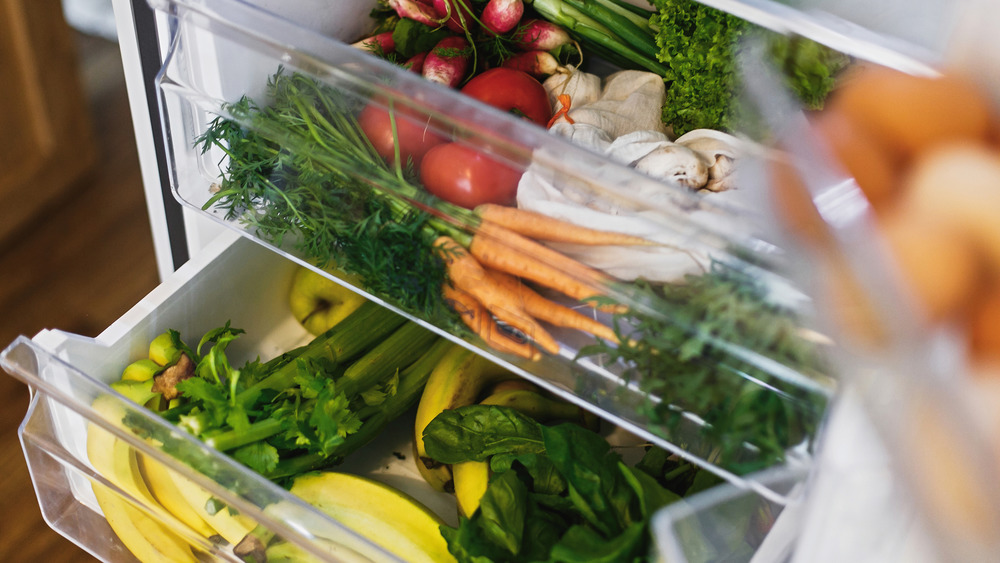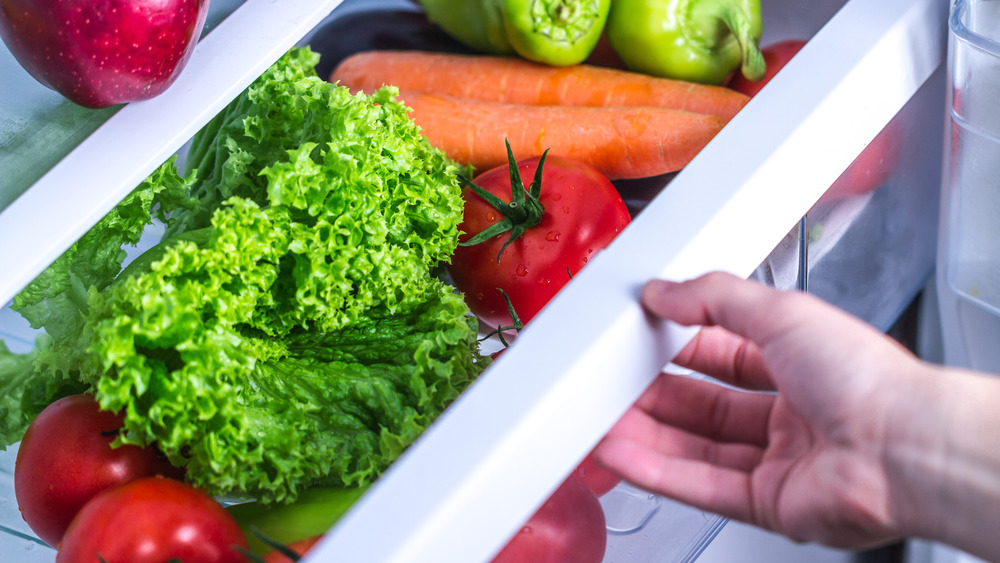Here's What Your Fridge's Crisper Drawers Actually Do
If you've been stashing random items in your refrigerator drawers to make room for stuff on the shelves, take note. While it's convenient to wedge things in those storage bins, the drawers have a purpose. And it's not to keep your White Claw cold.
First, it's important to discuss how a refrigerator works. The Spruce Eats explains that a refrigerator is chilly because it takes warm air and blows it over refrigerant-filled copper coils. The refrigerant absorbs the heat and pushes it out through radiator pipes. But it's not just warm air that's removed; moisture is sucked out too. When the warm air blows over the cold copper, moisture condenses on the coils, then drips into a pan located outside the fridge where it subsequently evaporates. Thus, the main compartment of your refrigerator is an arid environment and certain fruits and vegetables will dry out and wither if not stored properly. That's where the crisper drawers come in (via GE Appliances).
Taste of Home states that crisper drawers extend the life of fruits and vegetables by controlling moisture level. The main compartment of the fridge is dry, but most crisper drawers have humidity vents, which enable you to adjust airflow. Close the vent to create a drawer with more humidity or open the vent so dry air can enter and create a lower-humidity space.
How to know what foods belong in which drawer
Epicurious asserts that not all crisper drawers have vents so don't fret if you don't see any. No vent means no dry air, so it's a high-humidity environment. But when it comes to actually deciding which foods go in which drawer, Eat This, Not That! says you'll have to consider ethylene, a naturally occurring gas emitted by certain fruits and vegetables.
Problem is, some produce is ethylene-sensitive and will spoil rapidly when stored with its ethylene-producing brethren. Ethylene-producers include apples, avocados, bananas, mangoes, pears, potatoes, strawberries, and tomatoes, among others. Ethylene-sensitive produce includes asparagus, broccoli, Brussels sprouts, carrots, cucumbers, fresh herbs, leafy greens, onions, and squash to name a few. So yes, that means you shouldn't be storing your potatoes with your onions.
Kitchn asserts that ethylene-emitters should be stored in a low-humidity drawer, with the vent open if possible to allow some gas to escape. Reader's Digest adds that even if you don't have a vent, trapping ethylene inside the drawer prevents it from prematurely spoiling other produce in your fridge.
Martha Stewart states that even without humidity controls, you should separate your fruits and veggies based on ethylene production. What if you have just one crisper drawer? Store ethylene-producers in a tightly sealed container somewhere else in the fridge.
And make sure to fill those spaces; Cooking Light claims that crisper drawers work best when they're two-thirds full, with heavier items (like potatoes) on the bottom, and delicate produce (leafy greens and fresh herbs) on top.

